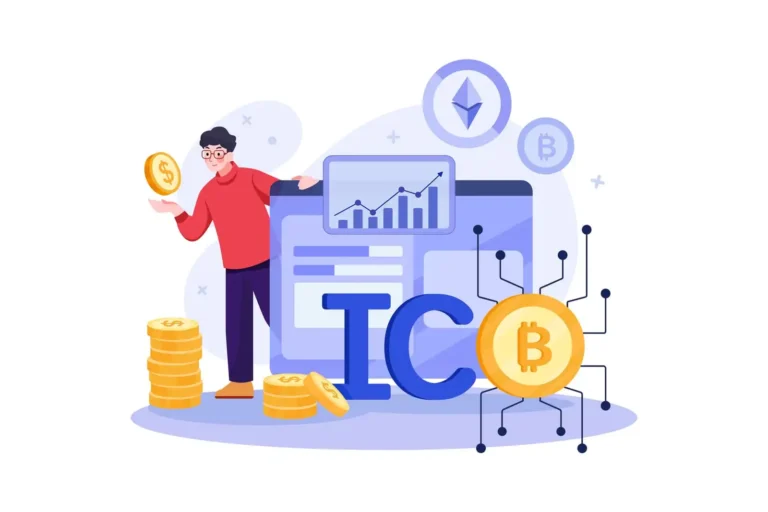Navigating Blockchain Regulatory Issues: Legal Hurdles and How to Overcome Them
- Insights & News
- September 7, 2025
When Facebook announced its Libra cryptocurrency project in 2019, the company expected to revolutionize digital payments. Instead, they faced immediate pushback from regulators worldwide, with senators demanding hearings and central bankers expressing grave concerns about financial stability. The project was eventually scaled back and rebranded as Diem before being abandoned entirely in 2022.
This high-profile case illustrates a fundamental challenge facing blockchain technology today: the gap between innovation potential and regulatory clarity. While blockchain promises to transform industries from finance to supply chain management, companies operating in this space must carefully address complex legal frameworks that vary dramatically across jurisdictions.
The distributed and borderless nature of blockchain technology creates unique regulatory challenges that traditional legal systems struggle to address. Companies that fail to understand and comply with these requirements face significant risks, including hefty fines, operational restrictions, and reputational damage. Success in the blockchain space increasingly depends on balancing innovation with proactive regulatory compliance.
Understanding Blockchain Regulatory Issues
The regulatory issues in blockchain technology encompass a broad spectrum of legal considerations that stem from the technology’s unique characteristics and applications.
Blockchain regulatory issues arise from the tension between traditional legal frameworks designed for centralized systems and the decentralized nature of distributed ledger technology. These challenges span multiple areas of law, including financial regulations, data protection, intellectual property rights, and cross-border enforcement mechanisms.
The decentralized architecture of blockchain networks complicates traditional regulatory approaches because no single entity controls the system. This creates questions about jurisdiction, liability, and enforcement that regulators worldwide are still working to resolve. Unlike traditional financial systems with clear intermediaries and control points, blockchain networks operate through consensus mechanisms that distribute authority across multiple participants.
Regulatory issues for blockchain adoption become particularly complex when considering how existing laws apply to new technological paradigms. Many current regulations were written decades before blockchain technology existed, creating gaps and ambiguities that companies must carefully assess when developing and deploying blockchain solutions.
Key Legal Hurdles in Blockchain Technology
Modern blockchain companies face multiple regulatory challenges that can significantly impact their operations and growth strategies.

Regulation of Digital Assets and Cryptocurrencies
The classification and regulation of digital assets represents one of the most significant blockchain regulatory issues facing the industry today. Regulatory authorities struggle to determine whether specific tokens should be classified as securities, commodities, or currencies, with each classification carrying different legal obligations and compliance requirements.
Securities regulators like the SEC in the United States have taken enforcement actions against companies they believe issued unregistered securities through token offerings. The Howey Test, originally developed for traditional securities, is now applied to determine whether digital tokens qualify as investment contracts subject to securities laws.
Initial Coin Offerings (ICOs) and Security Token Offerings (STOs) face particularly stringent oversight. Many ICO projects launched between 2017 and 2018 later received enforcement actions for failing to comply with securities regulations. STOs, designed to comply with existing securities laws from the outset, require extensive legal documentation and regulatory filing procedures.
Different jurisdictions take varying approaches to digital asset classification. While some countries like Switzerland have developed clear frameworks for token categorization, others maintain ambiguous positions that create uncertainty for blockchain companies operating across multiple markets.
Anti-Money Laundering (AML) and Know Your Customer (KYC) Compliance
Financial regulators worldwide have implemented strict AML and KYC requirements for blockchain-based financial services to prevent money laundering, terrorism financing, and other illicit activities. These regulatory issues in blockchain technology create significant compliance burdens for companies operating digital asset platforms.
Blockchain companies must implement robust customer identification procedures, transaction monitoring systems, and suspicious activity reporting mechanisms. The pseudonymous nature of many blockchain transactions creates additional challenges for compliance teams trying to identify and verify customer identities.
Decentralized exchanges and peer-to-peer trading platforms face particular challenges in implementing traditional KYC procedures while maintaining the decentralized ethos that attracts many users. Some platforms have chosen to restrict services to certain jurisdictions rather than implement comprehensive compliance programs.
Regulatory authorities increasingly expect blockchain companies to maintain the same compliance standards as traditional financial institutions, including regular audits, staff training programs, and detailed record-keeping requirements.
Data Privacy and Security Concerns
The immutable and transparent nature of blockchain technology creates inherent conflicts with privacy regulations like the European Union’s General Data Protection Regulation (GDPR). These regulatory issues in blockchain technology center around the right to be forgotten and data minimization principles.
Key privacy challenges include:
- Right to Erasure Conflicts: GDPR requires companies to delete personal data upon request, but blockchain’s immutable nature makes true deletion technically impossible
- Data Controller Identification: Determining legal responsibility for data protection in decentralized networks remains unclear
- Cross-Border Data Transfers: Blockchain networks that span multiple jurisdictions must comply with varying data protection requirements
- Consent Mechanisms: Obtaining and managing user consent for data processing becomes complex in decentralized systems
Companies developing blockchain solutions must carefully design their systems to minimize privacy risks while maintaining the security and transparency benefits that make blockchain valuable.
Intellectual Property and Patent Issues
The intersection of blockchain technology with intellectual property law creates complex challenges for companies developing innovative solutions. Patent disputes over fundamental blockchain concepts and implementation methods have become increasingly common as the technology matures.
Major technology companies have filed thousands of blockchain-related patents, creating potential legal minefields for smaller companies and open-source projects. The open-source nature of many blockchain protocols further complicates IP considerations, as developers must balance innovation with patent protection strategies.
Companies must conduct thorough patent searches before implementing blockchain solutions and consider defensive patent strategies to protect their innovations while avoiding infringement claims from competitors.

Cross-Border Jurisdictional Challenges
The global nature of blockchain networks creates significant challenges for regulatory enforcement and compliance. Transactions that occur on decentralized networks may involve participants from multiple countries, each with different legal requirements and enforcement mechanisms.
Regulatory arbitrage becomes a concern when companies attempt to avoid strict regulations by operating from jurisdictions with more permissive frameworks. This approach can backfire if regulatory authorities in major markets decide to restrict access to non-compliant services.
International cooperation on blockchain regulation remains limited, with different countries taking vastly different approaches to digital asset oversight and blockchain governance.
How to Overcome Blockchain Regulatory Challenges
Successfully managing regulatory compliance requires a comprehensive approach that addresses both current requirements and anticipated regulatory developments.
Proactive Legal Compliance and Regulatory Frameworks
Companies must develop robust compliance programs that anticipate regulatory requirements rather than simply reacting to enforcement actions. This proactive approach involves several key components:
- Regular Legal Reviews: Conducting periodic assessments of applicable regulations and their impact on business operations
- Compliance Documentation: Maintaining detailed records of compliance efforts and decision-making processes
- Risk Assessment Procedures: Identifying and evaluating regulatory risks associated with specific business activities
- Staff Training Programs: Ensuring employees understand relevant legal requirements and compliance procedures
As the regulatory environment for blockchain evolves, it’s vital to consult with a securities lawyer in NYC. A knowledgeable attorney can provide essential guidance on compliance, especially when navigating complex legal frameworks that may involve securities law, digital asset classifications, and financial regulations.
Engaging with Regulators and Policymakers
Active engagement with regulatory authorities helps companies understand evolving requirements while providing valuable input on practical implementation challenges. Many regulatory agencies welcome dialogue with industry participants as they develop new frameworks for blockchain oversight.
Industry associations and working groups provide platforms for collective engagement with policymakers, allowing companies to contribute to regulatory development while sharing compliance costs and expertise.

Adopting Self-Regulatory Measures and Best Practices
Industry self-regulation can help establish standards and best practices that demonstrate responsible innovation to regulatory authorities. Self-regulatory initiatives often become the foundation for formal regulations as governments develop their oversight frameworks.
Professional certification programs, industry codes of conduct, and voluntary compliance standards help establish credibility with regulators while providing practical guidance for companies seeking to maintain high ethical standards.
Partnering with Legal and Compliance Experts
Specialized legal counsel with expertise in blockchain technology and relevant regulatory frameworks becomes essential for companies operating in this space. These partnerships provide ongoing guidance on compliance requirements and help companies adapt to changing regulatory conditions.
Regular legal audits and compliance reviews help identify potential issues before they become enforcement actions, allowing companies to address problems proactively rather than defensively.
Building a Sustainable Compliance Strategy
Addressing blockchain regulatory issues requires ongoing commitment to compliance and adaptation as legal frameworks continue to develop. Companies cannot afford to wait for complete regulatory clarity before implementing comprehensive compliance measures that address the fundamental mismatch between traditional legal frameworks and decentralized systems.
Proactive companies that develop robust compliance programs, engage actively with regulators, and partner with legal experts create sustainable competitive advantages. Success in the blockchain space increasingly depends on balancing innovation with regulatory responsibility within appropriate legal boundaries.
The most successful blockchain companies treat regulatory compliance as a strategic asset, using their legal expertise to build trust with stakeholders and reduce operational risks. This approach creates opportunities for market leadership as regulatory frameworks mature and favor compliant participants.




























